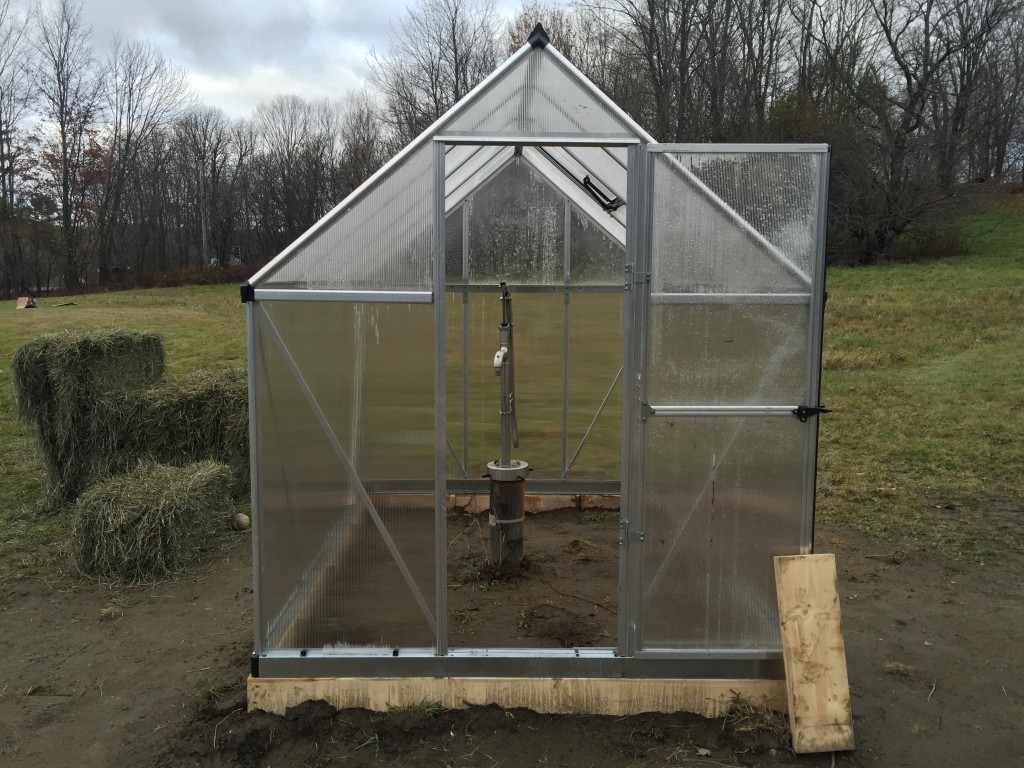So far so good
A greenhouse to cover the well head
With a hand pump being our only access to water, we’re taking extra precautions to ensure it will survive the tough winters we get. While technically not necessary for the pump we got, it can only help and should also improve the chore of gathering water. And we get a greenhouse out of it 🙂
I like the idea of combining under one roof, 2 functions where freezing is non-desirable, water and growing plants. Our dream is to build a bigger greenhouse down the road and maybe even heat it. Water for the plants would be right where it’s needed and benefit from the higher temperatures. Our only worry right now is whether it will survive the freak wind gusts we get.


